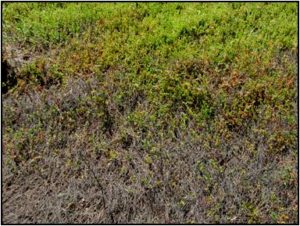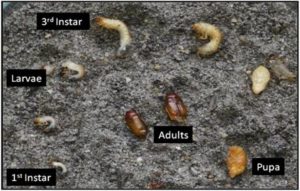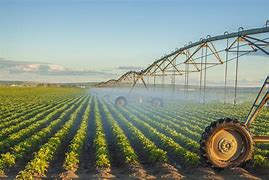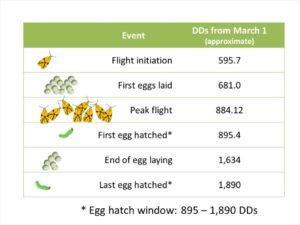Spotted Lanternfly in apple orchards…. [Read more…]
Fruit Crops Edition
Seasonal updates on diseases, insects, weeds impacting tree fruit and small fruit (blueberry, cranberry, and wine grape). Fruit Pest Alerts are also available via this category feed.
Subscriptions are available via EMAIL and RSS.
RCE Agents Offer Marketing Tips With Del State U & USDA Northeast Climate Hub
Webinar Postponed ’til Fall!
Due to technical issues and low enrollment, this webinar has been postponed by the organizers and will be rescheduled for the fall.
Register here today (7/7/20) by 11pm!
Webinar: Part 2 in a series
Emergency Preparation & Dealing with COVID-19 on Farms: Alternative Marketing Strategies to Stay in Business
Wednesday, July 8, 2020
Time: 12 – 1:15 PM
Use the link below to register by July 7, 2020, 11 PM EST. The Zoom link to the webinar will be e-mailed to all registered attendees prior to the webinar.
[link removed]
Small farmers and extension agents working with small farmers will learn best practices for communicating with consumers and meeting their demands.
Participants will learn how to:
- Use available resources to market your products
- Reach out to consumers online
- Use alternative marketing strategies to sustain and grow businesses
- Use online business opportunities for farm sales
Attendees will learn about available resources to help them manage logistics of the Covid-19 health crisis on their farms. Presenters will share information and solutions from the experts and answer questions from participants. Like the first webinar in this series, this meeting will address common problems most farmers are facing, what they are planning to do to stay in business and how well their plans are working. The webinar series also summarizes how extension programs can assist farmers through this difficult time.
Agenda (Q&A session after each presentation)
| 12 – 12:05 PM | Welcome & Introduction | Gulnihal Ozbay & Jason Challandes, DSU; Erin Lane, USDA Northeast Climate HUB |
| 12:05 – 12:25 PM | “Know Your Customers Know Your Prices” |
Richard VanVranken, Professor & County Extension Department Head (Small Farms & Farm Marketing), Rutgers Cooperative Extension of Atlantic County, New Jersey |
| 12:25 – 12:45 PM | “Meeting Customer Demands for Agricultural Products In response to the Covid-19 Pandemic” |
Stephen Komar, Associate Professor & Agriculture & Natural Resources County Agent II, County Extension Department Head (Plant and Animal Agriculture), Rutgers Cooperative Extension of Sussex County, New Jersey |
| 12:45 – 1:05 PM | “Online logistics and considerations with Direct Sales Models during Covid-19” | William J. Bamka, Associate Professor & Agriculture & Natural Resources County Agent II, County Extension Department Head of Rutgers Cooperative Extension of Burlington County in New Jersey, Crop Production and Agritourism |
| 1:05 – 1:15 PM | Closing Remarks & Information on Webinar Evaluation |
Dr. Ozbay and Ms. Lane |
This webinar series is moderated by Delaware State University Cooperative Extension (Dr. Gulnihal Ozbay) & USDA Northeast Climate Hub (Erin Lane). Webinar hosts are Ms. Megan Pleasanton & Mr. Jason Challandes (DSU Cooperative Extension).
Post-Pollination Insect Control
If needed, post-pollination sprays (particularly for Sparganothis fruitworm and spotted fireworm) should be applied as soon as bees are removed; ideally before 11 July. Sparganothis fruitworm is monitored with pheromone traps to assess adult flight pattern and their abundance. If you had high trap counts of this pest and have not used an insecticide treatment yet you should consider treating soon to prevent damage to berries. Your post-pollination options include Diazinon, Exirel, Altacor, or Delegate.
Root-feeding insects and use of Imidacloprid
If your cranberry beds have damage caused by root feeding insects, you should consider treatment with imidacloprid (Admire Pro and other generics) immediately after bees are removed (mid-July). Dead plant patches indicate the presence of root-feeding insects (Figure 1). Pull dead vines and search through the root zone and soil for grubs. Imidacloprid is labeled for the control of rootworm, root grub (Phyllophaga spp.) (Figure 2), and other scarabs in cranberries. This insecticide is a contact and stomach poison that affects the insect nervous system. It is highly systemic and toxic to honey bees; therefore, can be used only as a post-pollination insecticide. This insecticide can be applied by ground or by chemigation. Aerial application of this product is prohibited. Admire Pro has a long residual activity (> 100 days) as long as the insecticide is not directly exposed to the sun and can be used at 7-14 fl oz/acre. A maximum of 14 fl oz of Admire Pro can be used per acre per season. Irrigate target area with 0.1 to 0.3 inches before and after the application of imidacloprid. The pre-harvest interval is 30 days. Most scarab grubs in cranberries have multi-year life cycles; consequently, you may not be able to suppress a population of 2- and 3-year life cycle grubs with a single application. You may have to use imidacloprid two to three years in a row for most effective suppression. For this reason, it is useful to know what species you have before using imidacloprid. See “Cranberry Insects of the Northeast” (authors: Averill and Sylvia) for information on how to identify common grub species in cranberries.

Figure 1. Damage caused by Phyllophaga grubs

Figure 2. Phyllophaga grubs
Governor Signs Permit Extension Act: NJDEP Water Certifications Extended 1 Year

Governor Murphy signed The Permit Extension Act (A3919/S2346) this week, which extends certain permits during the COVID-19 emergency. Agricultural Certifications issued by the DEP are included in this extension, so any Agricultural Certification which expired on or after March 9, 2020 will be extended.
Any complete new, renewal or modification application already submitted to the DEP will continue to be reviewed and issued for the full five-year term.
Any Certification holder who received the first renewal reminder which contained the pre-filled application form does not need to do anything at this time. The DEP will forward you a new pre-filled application once the extension period is over.
“COVID-19 extension period” means the period beginning March 9, 2020 and continuing for as long as a public health emergency, pursuant to the “Emergency Health Powers Act,” P.L.2005, c.222 (C.26:13-1 et seq.), or a state of emergency, pursuant to P.L.1942, c. 251 (C.App.A.9-33 et seq.), or both, that has been declared by the Governor in response to COVID-19, is in effect.
Please be advised that annual water diversion reports were required to be submitted to the DEP by February 28, 2020 and are not extended due to the passage of this Bill. The DEP is issuing reminders to those who failed to submit this information in accordance with their Certification. Continue to log diversion amounts and submit your reports in accordance with the deadlines in your Certification.
Rutgers Cooperative Extension is working very closely with the DEP’s Bureau of Water Allocation & Well Permitting to resolve any ongoing issues and concerns. The Bureau is aware that many renewal applications are awaiting the Ag Agent review and signature. With the extension act, these renewal applications are being extended as mentioned above.
Some RCE Offices remain closed or with minimal access at this time. Call your local Rutgers Cooperative Extension office for specific information. In addition, during the month of July, staff in the NJ Department of Agriculture and the NJ DEP personnel are furloughed, and response times will be slowed, so please be patient during these challenging times.
Sparganothis Fruitworm Degree-Day Update: as of July 01, 2020
Based on our degree-day (DD) model for Sparganothis fruitworm, first eggs hatched at about 895 DD (see chart). As of July 01, Sparganothis has accumulated 979 DD (using April15 as biofix). This indicates that eggs have started to hatch, and fruit will become susceptible to infestation. Most beds are close to the end of bloom. Thus, if trap counts have been high, then a post-bloom application might be necessary. Growers should consider treatment early next week (as soon as bees are removed) to prevent damage to berries. Optimal control will be achieved if insecticides are applied before 07 July. Your best post-bloom options are Diazinon, Exirel, Altacor, or Delegate.

Sparganothis fruitworm degree-day model
Fruit IPM for 06/30/20
Peach:
Oriental Fruit Moth: We are between generations 1 and 2, with the first insecticide applications having been just applied in southern counties, and in northern counties due by the weekend. The second application will be due the following week. [Read more…]
